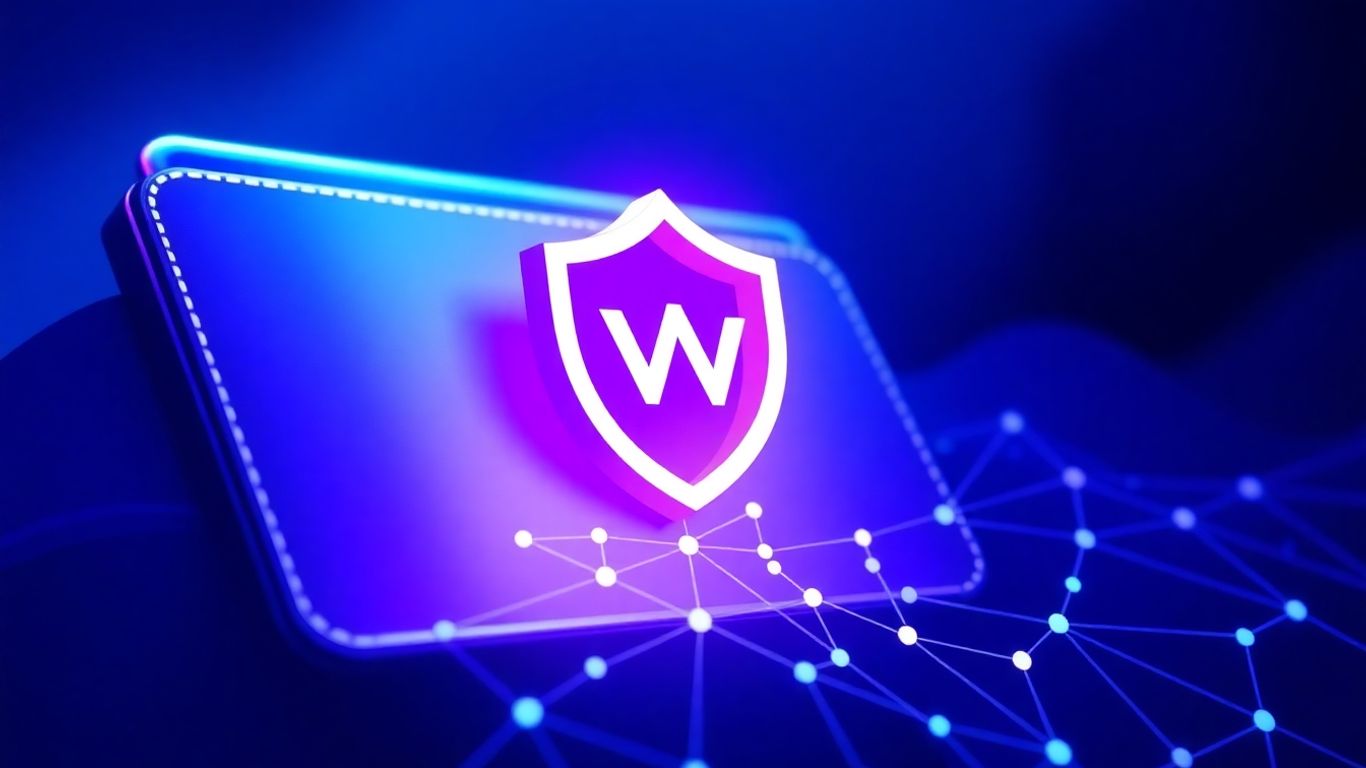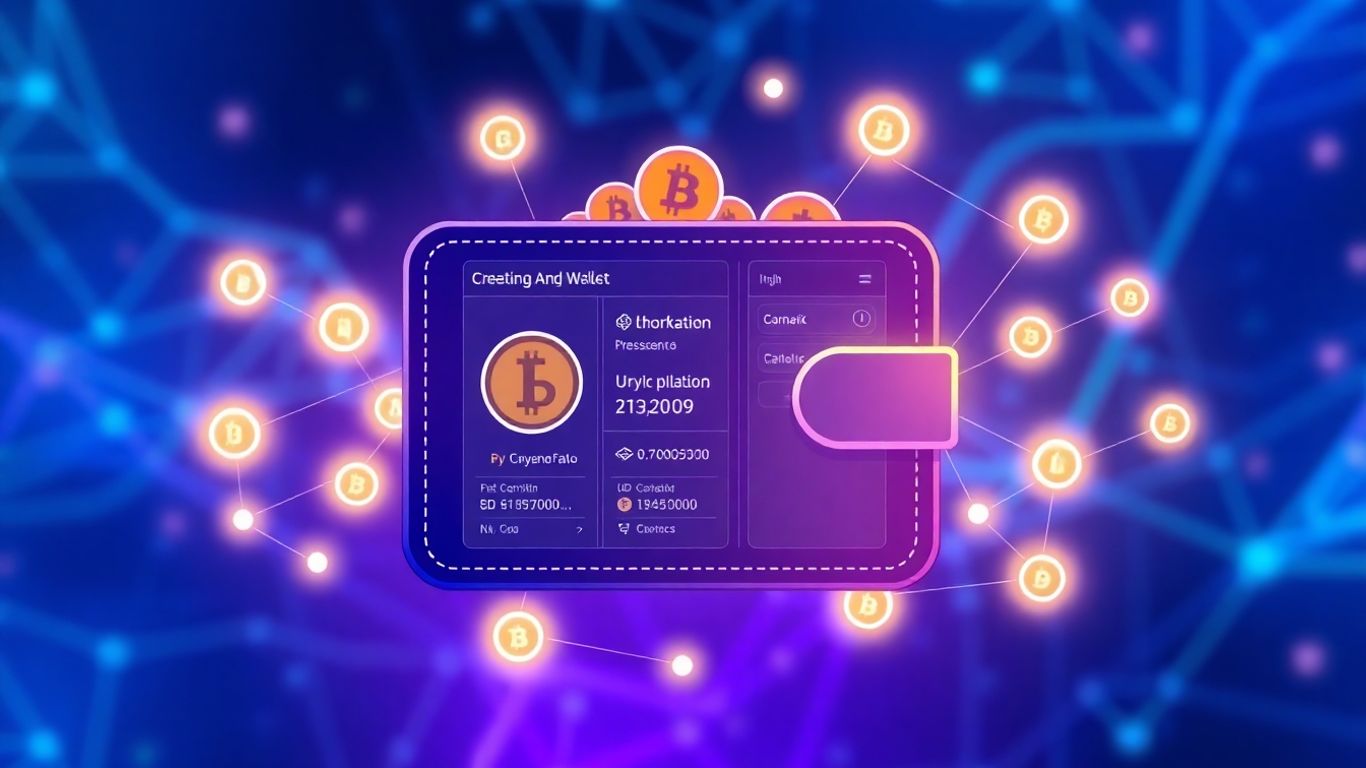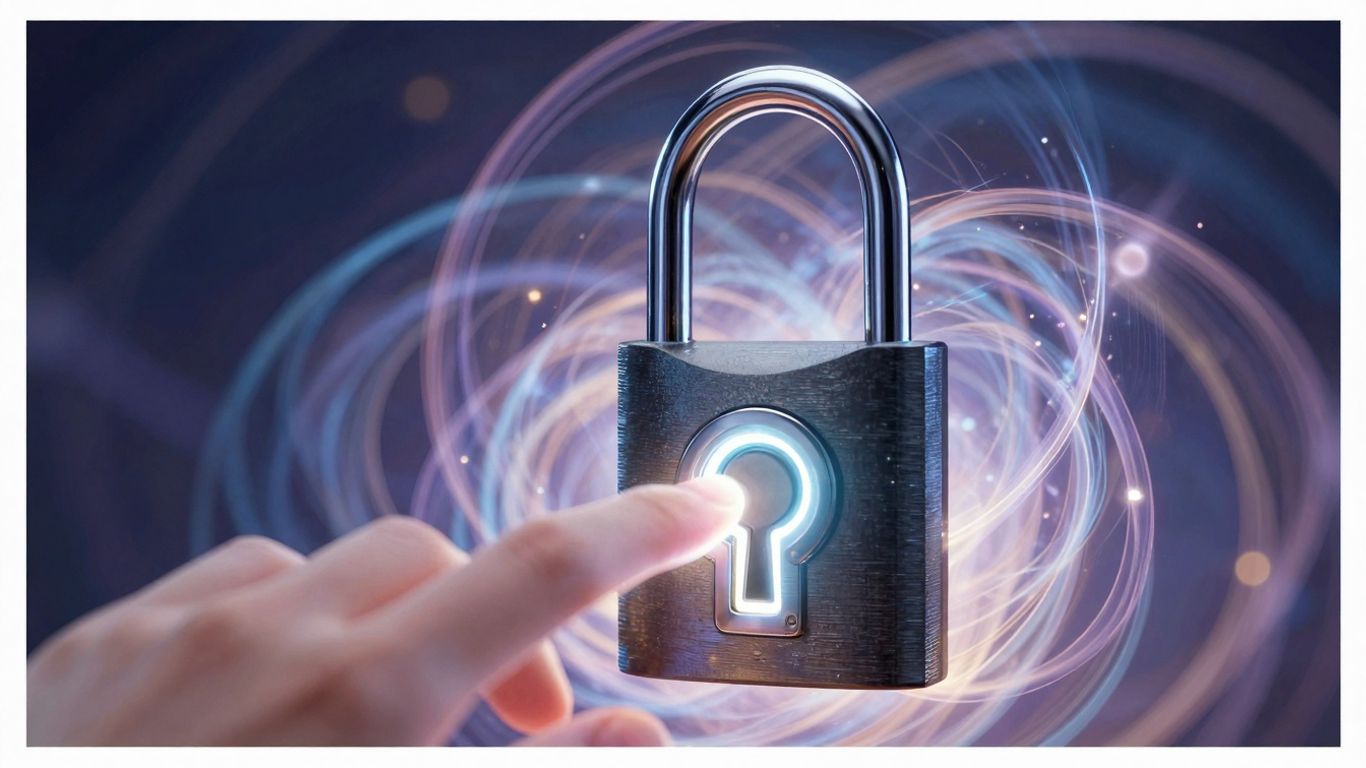[ newsletter ]
Stay ahead of Web3 threats—subscribe to our newsletter for the latest in blockchain security insights and updates.
Thank you! Your submission has been received!
Oops! Something went wrong. Please try again.
Discover the best Web3 wallet Reddit users recommend for 2025. Explore top picks for security, ease of use, and dApp connectivity.





Looking for the best web3 wallet reddit in 2025? It's a big question, and honestly, finding the right one can feel like a puzzle. So many options out there, right? We've sifted through what people are actually talking about on Reddit to help you figure it out. Whether you're just starting or you've been around the block a few times, getting your crypto storage sorted is super important. Let's break down what matters and see what the community is saying.
Alright, so you're looking to get into the whole crypto thing, huh? It can feel like a maze out there, with so many wallets promising the moon. But honestly, for folks just starting out with Bitcoin or other digital coins, finding something that's easy to use without being flimsy on security is key. That's where Best Wallet really shines.
What makes it stand out for newbies? Well, for starters, it doesn't make you feel like you need a computer science degree to figure it out. The interface is pretty clean, and you can actually see what's going on with your money. Plus, unlike some wallets that only play nice with one or two types of coins, Best Wallet supports over 60 different blockchains. So, whether you've got Bitcoin, Ethereum, or some other altcoin, it all hangs out in one spot. No more bouncing between a bunch of apps just to check your balances.
Here's a quick rundown of why it's a good starting point:
You know, it's easy to get overwhelmed by all the technical talk. But at its core, managing your crypto should feel as straightforward as managing your regular bank account, just with more control. This wallet aims for that simplicity.
They've also thrown in features like portfolio tracking so you can see how your investments are doing at a glance, and even market updates. It's like having a little crypto dashboard right in your pocket. For anyone dipping their toes into the digital asset world, Best Wallet offers a solid, user-friendly entry point without sacrificing the important stuff like security and control.

Zengo is shaking things up in the crypto wallet world. Forget those complicated seed phrases that are super easy to lose or have stolen. Zengo uses something called Multi-Party Computation (MPC) technology. Basically, it splits your private key into a few different pieces. One piece stays on your phone, and another is handled by Zengo. This means no single entity, not even Zengo itself, has full control over your private key. This is a big deal for security, making it way harder for hackers to get to your funds.
It’s a mobile-only wallet, available for both iOS and Android, and it supports a ton of different cryptocurrencies – over 380, including the big ones like Bitcoin and Ethereum, plus NFTs. You can even buy, sell, and swap crypto right within the app, which is pretty convenient. If you want to connect to decentralized apps (dApps), Zengo works with WalletConnect.
Here’s a quick look at what makes Zengo stand out:
While Zengo is mobile-only and some advanced features require a Pro subscription, its focus on security and user-friendliness makes it a strong choice, especially if you're new to Web3 or just want a simpler, more secure way to manage your digital assets without the usual seed phrase hassle.
Trust Wallet has really made a name for itself, and it’s easy to see why. It’s one of those wallets that just works, whether you’re just dipping your toes into crypto or you’ve been around the block a few times. It’s a decentralized, open-source wallet, which means you’re in control of your assets. Since Binance acquired it back in 2018, it’s grown a lot, now supporting a huge number of digital assets across a bunch of different blockchains – we're talking millions of assets on over 65 chains.
What’s cool is that it’s available as both a mobile app and a browser extension. This makes managing your whole crypto collection pretty straightforward. You can store, send, and receive your digital money, and even check out decentralized apps (dApps) right from the built-in browser. Plus, if you’re looking to earn a bit extra, you can stake your crypto directly within the wallet. No need for extra platforms or complicated setups.
Security is a big deal with Trust Wallet. Your private keys are encrypted and stored right on your device, and you can add biometric login like fingerprint or face ID for an extra layer of protection. The interface is also super clean and easy to figure out, which is a huge plus for anyone new to this space. But don't let the simplicity fool you; it’s got plenty of features for the more seasoned user too.
Here’s a quick rundown of what makes it stand out:
Trust Wallet aims to be a one-stop shop for your crypto needs, blending ease of use with powerful features. It’s a solid choice for anyone looking to interact with the Web3 world without a steep learning curve.
They’ve also got a pretty ambitious roadmap, with plans to make their native token, TWT, a big part of future developments. The goal is to reach one billion users by 2030, which shows they're serious about growth and innovation in the Web3 space.
When you're getting serious about Web3, keeping your digital assets safe becomes a big deal. That's where hardware wallets come in, and the Ledger Flex is a pretty solid option for this. It's like a little vault for your crypto, keeping your private keys offline and away from internet dangers. This is super important because, let's face it, online threats are everywhere.
The Ledger Flex has this nice 2.84-inch touchscreen. It makes checking out transactions and signing things a lot easier. Plus, it has Bluetooth and NFC, so you can connect it wirelessly to your phone or computer using the Ledger Live app. This makes managing your tokens way more convenient.
Security is the main thing with hardware wallets, and Ledger Flex is built tough. It uses a Secure Element chip and has CC EAL6+ certification. Basically, it isolates your crypto from the online world, giving you an extra layer of protection.
Here's a quick rundown on getting it set up and connected:
Once it's all hooked up, you can use your Ledger Flex with popular dApps like Uniswap or OpenSea. Just remember to always double-check the transaction details on your Ledger screen before confirming.
While the Ledger Flex offers great security and usability for Web3, it does come with a price tag of $249. The touchscreen is also not in color, which is a minor drawback for some users.
It supports a bunch of different cryptocurrencies, which is handy if you're holding more than just one or two types of coins. It's also pretty compact, making it easy to keep safe when you're not using it.
If you're serious about keeping your crypto safe, the Trezor Safe 5 is one of the best tools out there. Built by SatoshiLabs, this sleek little device has been a top pick for crypto holders since it launched. It’s packed with advanced security features but keeps things simple enough for everyday use—no need to be a tech wizard to get started.
The Trezor Safe 5 offers a great mix of security and usability for managing your digital assets. It's a hardware wallet, meaning your private keys – the secret codes that give you access to your crypto – are stored offline, away from internet threats. This is a big deal when you consider how many online scams and hacks happen.
What makes the Safe 5 stand out?
Connecting to Web3 is also pretty straightforward. You can plug the Safe 5 into your computer, install the Trezor Bridge software, and then connect it to popular browser wallets like MetaMask. This lets you interact with decentralized apps (dApps) and DeFi platforms while your private keys stay safe on the hardware device. Every transaction you make will need a physical confirmation on the Safe 5's screen, which is a solid defense against malware trying to steal your funds.
While the Trezor Safe 5 is a bit pricier than some other options, its robust security features, user-friendly interface, and strong Web3 compatibility make it a worthwhile investment for anyone serious about protecting their digital wealth. The added peace of mind from knowing your assets are stored offline is hard to put a price on.
One small downside is that the touchscreen can get smudgy, and it doesn't have built-in support for NFTs, so you'll need to use other apps for that. But for secure crypto storage and Web3 interaction, it's a really solid choice.
Tangem Wallet is a pretty neat option if you're looking for something different in the hardware wallet space. Instead of a clunky USB device, Tangem looks like a credit card and uses NFC to connect with your phone. It's super straightforward – just tap your card to your phone to get things done. This makes it really easy to manage your crypto on the go.
One of the biggest draws for Tangem is its seedless security model. You don't have to worry about writing down or losing a recovery phrase, which is a huge relief for many people. Instead, you can set up backup cards. If you lose your primary card, you can still get to your funds with a backup. This approach really simplifies the whole security aspect of holding crypto.
Here's a quick look at how it works:
Connecting to dApps is also pretty simple using WalletConnect. You open the dApp, select 'Connect Wallet', choose WalletConnect, then open your Tangem app, scan the QR code, and tap your card to your phone to confirm. It's a bit different from other hardware wallets, but it's designed to be quick and secure.
While Tangem is fantastic for mobile users and those who want to avoid seed phrases, it's worth noting that it doesn't have a dedicated desktop app. If you do most of your crypto business on a computer, you might find other options a bit more convenient for that specific use case. However, for straightforward, secure mobile crypto management, Tangem provides a secure digital crypto wallet solution that's hard to beat.
Exodus is a pretty solid wallet if you're looking to manage a bunch of different digital stuff and want it to look good while doing it. You can grab it for your computer or your phone, which is handy. What really makes Exodus stand out for folks just getting into crypto is how clean the interface is. You can see your whole portfolio right away, and sending or receiving coins is pretty straightforward. They even have a built-in exchange, so you can swap between different cryptocurrencies without leaving the app. This makes managing different coins a lot less of a hassle.
Exodus makes it easy to interact with the growing world of decentralized applications (dApps) and other Web3 services. Whether you want to explore DeFi platforms, browse NFT marketplaces, or use other blockchain-based tools, Exodus aims to simplify the connection process. You can often connect directly from the wallet interface, acting as your digital identity for these services without needing to create separate accounts.
Here's a quick look at what Exodus brings to the table:
While Exodus is generally user-friendly, it's worth noting that it doesn't offer traditional two-factor authentication (2FA). Also, the software isn't fully open-source, which might be a point of consideration for users with very specific security preferences. However, for most people, the convenience and broad functionality outweigh these points.

Binance Wallet is a self-custody option that puts you in charge of your digital money while also making it simple to check out decentralized apps and DeFi. It's built right into the Binance mobile app, so you can manage, trade, stake, and swap crypto all from one spot. This wallet supports a bunch of different coins and blockchains, meaning you don't have to bounce between apps to handle your assets.
Security is a big deal here, using Multi-Party Computation (MPC) technology. This tech gets rid of traditional private keys and splits up secret codes across different places, making your wallet more secure without making things complicated. It's a pretty neat way to keep things safe.
Here's a quick look at what makes it stand out:
It's worth noting that the wallet is currently mobile-only, which might be a drawback if you prefer using a desktop. Also, the sheer number of features could feel a bit much for total beginners.
Binance has faced some regulatory attention in different countries. While this might not affect your day-to-day use, it's something to keep in mind if you're concerned about the long-term stability of platforms in certain regions.
Overall, if you're looking for a self-custody wallet that integrates well with the broader Binance ecosystem and offers a wide range of features, Binance Wallet is definitely worth a look.
Phantom started out as the go-to wallet for the Solana blockchain, and honestly, it kind of still is. It really rode the wave of Solana’s fast and cheap transactions, making it super easy for people to jump into things like DeFi and NFTs on that network. With over 7 million users, it’s clear they did something right.
But they haven't just stuck to Solana. In 2024, Phantom expanded to support Ethereum and Polygon. This means you can now manage assets across these popular networks all from one place, using that same user-friendly experience Phantom is known for. It’s a big deal for anyone who’s active on multiple chains.
What’s cool is how integrated everything feels. You can stake your SOL directly from the wallet, and they’ve got a built-in NFT gallery so you can actually see your digital art without needing a separate app. Plus, they’ve got features like token swaps using aggregators, so you can trade without leaving the wallet. It’s all about making things simpler.
Phantom’s focus on user experience, especially with its early adoption of Solana, really set a standard. The move to multi-chain support shows they’re thinking about the broader Web3 landscape and want to keep their users happy as they explore different blockchains.
Here’s a quick look at what Phantom offers:
Rainbow Wallet is a pretty slick option, especially if you're into the Ethereum ecosystem and want something that looks good and is easy to use. It's designed to be your main hub for all things Web3, letting you manage your crypto, NFTs, and connect to decentralized apps without too much fuss. It really shines with its user-friendly interface, making it approachable even if you're not a crypto veteran.
What I like about Rainbow is how it presents your assets. Instead of just a boring list of numbers, it shows off your NFTs with actual images, which is a nice touch. It also makes it simple to see your different tokens and keep track of your transactions. It's the kind of wallet that makes you want to check your portfolio.
Here's a quick rundown of what makes it stand out:
It's a non-custodial wallet, meaning you hold your private keys, which is always a good thing for security. You're in charge. It's available as a mobile app, so you can manage your assets on the go.
If you're looking for a wallet that balances good looks with solid functionality for Ethereum and NFTs, Rainbow Wallet is definitely worth a look. It simplifies a lot of the complexity often associated with Web3, letting you focus on exploring and using decentralized applications.
So, picking the right Web3 wallet is a pretty big deal for anyone getting into this space. It’s not just about storing your coins; it’s about how you’ll interact with everything else out there. We looked at what folks on Reddit are saying, and it’s clear that security is number one, but ease of use and what you can actually do with the wallet matter a lot too. Whether you’re a beginner just dipping your toes in or someone who’s been around the crypto block a few times, finding a wallet that feels right for you is key. Take your time, check out the options we talked about, and make sure your digital assets are safe and sound while you explore all the cool stuff Web3 has to offer.
Think of a Web3 wallet as your digital key to the new internet. It's not just for holding your digital money, like Bitcoin or Ethereum. It also lets you connect to cool new apps and services built on blockchain technology, like trading digital art (NFTs) or using decentralized financial tools. You need one to safely manage your digital stuff and interact with this exciting new online world without needing a middleman.
All Web3 wallets are crypto wallets, but not all crypto wallets are built for Web3. A basic crypto wallet might just store your coins and let you send or receive them. A Web3 wallet goes a step further by letting you connect directly to decentralized applications (dApps). It's like the difference between a simple notepad and a powerful computer – both can store information, but one can do so much more.
Safety is a big deal! Most Web3 wallets are designed to be very secure. Many are 'non-custodial,' meaning only YOU have access to your private keys, which are like the secret password to your funds. This gives you full control. However, it also means you're responsible for keeping those keys safe. Some wallets use advanced tech like multi-party computation to add extra layers of security, making them even harder to hack.
A 'hot wallet' is connected to the internet, like a mobile app or browser extension. They're super convenient for everyday use and quick transactions. A 'cold wallet,' like a hardware device, is kept offline. This makes it much more secure against online threats, making it ideal for storing larger amounts of crypto for the long term. Think of it like keeping cash in your pocket (hot) versus a safe deposit box (cold).
Absolutely! Many Web3 wallets are designed to handle more than just cryptocurrencies. You can often store and manage your Non-Fungible Tokens (NFTs), which are like unique digital collectibles or art pieces. Some wallets also support various tokens and can interact with different blockchain networks, making them a versatile tool for your entire digital portfolio.
Picking the right wallet depends on what you need. If you're new to crypto, look for something easy to use with a simple setup. If security is your absolute top priority, a hardware wallet might be best. Consider how many different types of coins or tokens you plan to hold, and if you want to easily connect to dApps for things like trading or gaming. Reading reviews and seeing what the community recommends, like on Reddit, can also be a big help!


